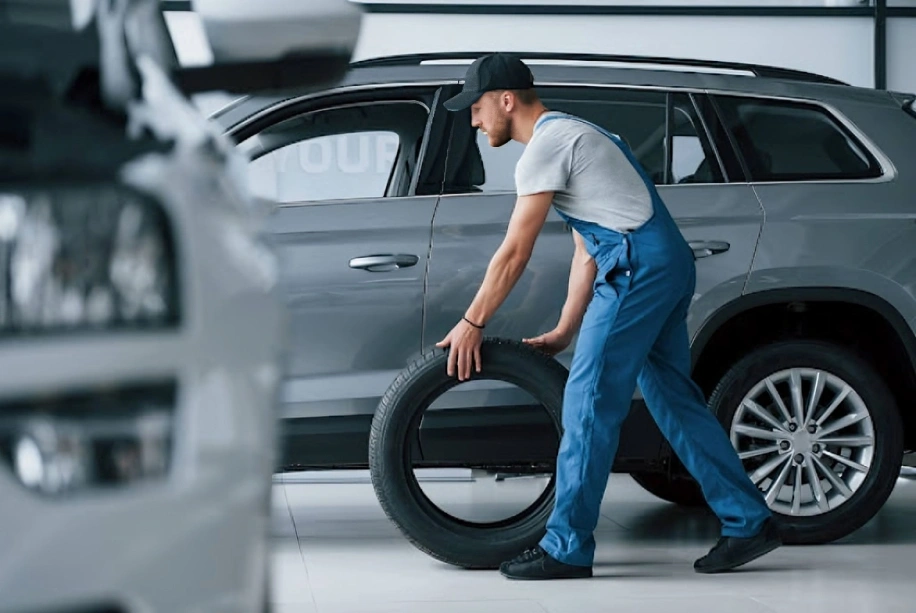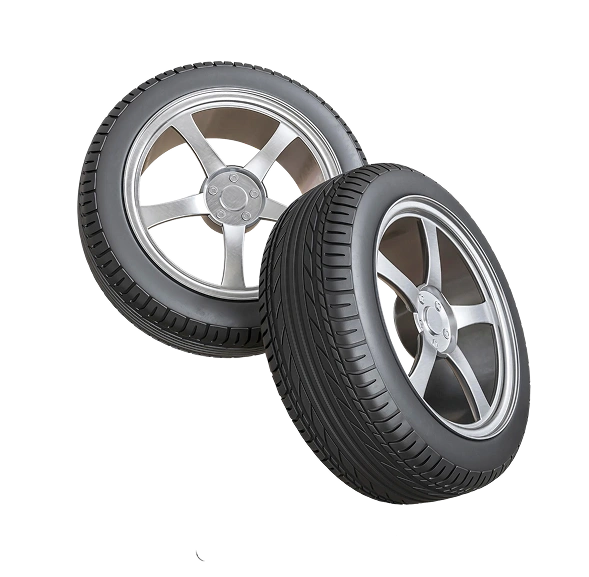Common Tyre Issues Faced by Melbourne Car Owners (and How to Fix Them)
You’re on your way out. Running a bit late. Coffee in hand. You look over and sure enough there it is. That same bloody tyre. Soft. Slumped. Flat enough to ruin your morning, again.
You didn’t hit anything. No glass. No nails. You even checked it last week. But somehow, it's back down. And it's starting to feel personal.
This is something that you have probably gone through more than once should you reside around Melbourne. Probably more than five times. And chances are, it’s not your fault.
Now, let us see this logically, as the tyre is not going to be letting go. The city is working against it.
What Is It About Melbourne Roads?
Honestly? This city is brutal on tyres. Just get the opinion of anyone who gets out on the road regularly, tradies, Uber drivers, mums making daycare drops or even the weekend footy fans. No one escapes it.
- Potholes Everywhere
Some suburbs have worse roads than others. Turn off to Footscray or find a short cut though to Thornbury and you will find craters that are not even legal. A pothole does not always puncture a tyre, but it may bruise a tyre. Enough bruises, and you’re losing pressure every week.
- Tram Tracks and Tight Corners
Back in the day when you had to do a hook turn on Nicholson Street or park between the car parks and the trams in Carlton and know how simple it is to either hit a curb or skew the tyre on tram tracks. Such pressure not only distorts the tyre as time progresses, but tears up the sidewall, and you won't even recognize the damage until it is too late.
- Heat and Weather Swings
Melbourne weather goes to extremes; one minute you are shouting about the need of a jumper and before you can come up with it, you are exclaiming about where the sunscreen has gone. That kind of shift messes with air pressure. The oil moves in and out of the tyre and loosens seals and valves. That slow leak you can’t find? It may only be the weather conditions of Melbourne eating at your gear.
- Gravel on the Edges
New builds and outer suburbs are dominated with unfinished roads. That loose stone isn’t just noisy, it’s sharp. Sharp enough to dig in slowly. It doesn’t need to be a big puncture either. A pinhole suffices to lose pressure in a few days.
The Most Common Tyre Problems You'll See Here
When their tyre becomes flat people tend to think that it might be a nail or screw. That is not even on the top agenda most of the days. Here’s what the mobile repair guys see the most:
- Slow leaks that don’t show up on first inspection
These could either be the valve, rim seal or a minute cut, that is difficult to notice unless the tyre is removed off the vehicle.
- Tyres that look fine but wear unevenly
Especially if you haven’t rotated in 10,000km. Or when your radios are a bit crooked, as, in Melbourne, they are.
- Sidewall bruises or slices
From kerbs, speed humps, or tight parking jobs. The damages would not be visible on the outside until it is very bad.
- Worn-out tread on just one edge
This one creeps up. The tyre may appear legal on the surface, and alright but slick inside.
- Tyres losing air overnight
Even without damage. It tends to be either because of heat, varying pressure or simply worn out rubber.
Can You Actually Repair It? Or Do You Just Need a New One?
It depends on where the damage is. That’s always the first question. Mobile tyre repair techs aren’t out to upsell, they just know where the safe limits are.
You Can Probably Repair It If:
- The hole is dead-centre on the tread
- It's not wider than a pencil
- You didn't drive long on it while flat
- There's no visible damage to the inner lining
Plugging that kind of puncture takes 15–20 minutes. A proper mobile tyre puncture repair Melbourne technician can do it without taking the wheel off in most cases.
It’s a Replacement Job If:
- The hole’s on or near the side
- The cut looks messy or jagged
- You’ve already plugged it once and it’s leaking again
- You can see cords or wires showing
- The tyre is bald, cracked, or old
It’s not about being fussy, it’s about safety. A sidewall plug might hold for a bit, but it won’t stop a blowout when you’re doing 100 on the freeway. And no mobile tech worth their salt is going to take that risk.
How Mobile Tyre Repair Works in Real Life
Assuming that you have never used a mobile service before, the process is as easy as it sounds.
- You call or book online.
Make them aware of what and where.
- They show up, usually quicker than you'd expect.
It can be at home, job, and even in front of a cafe.
- They do a proper check.
They don’t just fix the one tyre. They’ll look at all four. Pressure, tread, valve health, the lot.
- They fix or replace.
When it can be patched, they do the patching and you are all set. Otherwise they will tend to be carrying with them some new tyres and so they will change it right away.
- You pay and carry on.
Most take card or phone payments. No waiting room. No towing. No wasted time.
Should You Try Fixing It Yourself?
Some people do. You can grab a plug kit from Repco for $25, and in theory, that's enough.
But here's what usually goes wrong:
- You can't find the hole
- You plug it poorly
- You don’t check inside the tyre
- You don’t have a pump that can handle the pressure
- You miss something dangerous and still end up calling someone
By the time you’ve mucked around, you could have had it fixed properly by a Mobile Tyre Repair Melbourne technician.
How to Avoid Tyre Problems Before They Happen
Here’s what most Melbourne locals who don’t deal with flats every month usually do:
- Check tyre pressure once a month (especially after a cold snap)
- Rotate tyres every 10,000km without fail
- Pay attention to steering pull or wheel wobble they're early signs
- Keep an eye on tread depth legal is 1.5mm, but don't wait till it's that low
- Fix issues while they're small it's cheaper, faster, and safer
Fleet Owners: This Is Built for You Too
If you’re managing vans, trucks, or utes, you can’t afford downtime.
Mobile Tyre Repair Melbourne services are perfect for keeping teams on the road:
- Fast turnaround
- Repairs done at your depot or job site
- Regular maintenance checks available
- Predictable costs, no surprise downtime
Your crew gets more done, and you spend less time rescheduling jobs over something as annoying as a flat tyre.
Wrap-Up: Stop Guessing. Get It Sorted.
That tyre you keep topping up? It’s not going to fix itself.
If it's leaking, looks rough, or just feels off, call someone. Book a mobile tyre puncture repair service and get it handled where you are. You'll save time, avoid damage, and skip the hassle of driving on a tyre that's already had enough.
No waiting room. No messing around. Just fixed.
FAQs
You could, but you shouldn’t. It’s risky, and it wears out the tyre fast. Get it checked before it fails.
Standard repairs go at between 99 and 150 dollars in most of the services. Replacements cost more, depending on the tyre size.
Yes. Skilled technicians look after safety regulations and do not make repairs on tyres that cannot be repaired. They will not hesitate to tell you that they will fix it even though they will not do it right.
Yes. When it is done properly a patched tyre will serve as long as it is worn out. It is not a temporary solution, it becomes permanent with the proper way of doing them.
Deep cuts on the side walls, big holes and scratches on the side of the tread normally indicate the tyre requires changing.
They do. Utes, vans, and company cars are common. Many offer fleet support, too.
When you know what you are doing, and you have the gear, yes. However, to the average person, it takes less time, it is safer and it can be done better to call a pro.


